On May 22nd 2017, representatives from Be Collective and Eco Effective Solutions visited the Banyo facilities of Watkins Steel to witness a demonstration of local technological innovation. Des Watkins and Ben Yu from Watkins Steel proudly displayed their recently purchased Micro HoloLens “glasses” that allows you to view and interact with 3D models using mixed reality. The Hololens technology allows one to view and interact with 3D Tekla models off the office desktop.
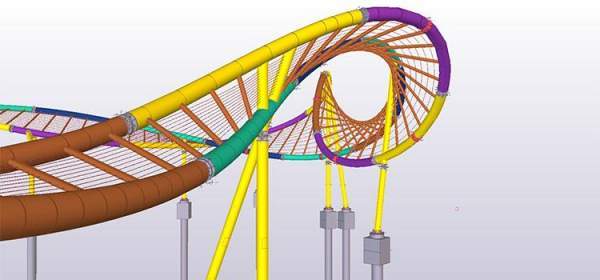
Mark Thomson believes that such new technology will transform our office workplaces in the future . “in the past we were focussed on space efficiency, investigating how to minimize floor areas to maximize working environments for chair based computer workstations. Now we will ideally be creating fluid spaces where people can move about casually and safely with Hololens and other wearable devices to optimize our work experiences “ With the Microsoft HoloLens you can alter the model, scale it down, or do a life-size walkthrough – improving accuracy, communication, and collaboration at every stage of the project.
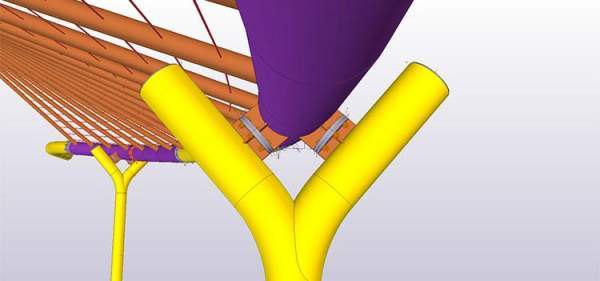
In addition to the BIM and Hololens demonstration, we were taken around the factory floor to witness the rollout of new robotized machinery being installed by an expert installation team from Holland. Watkins Steel has developed a Four step linked Process for steel fabrication and installation which includes a 3D scan of the site, Tekla 2d shop drawings and a 3D model, Voortman steel processing, and robotic total station site set outs. This end to end digitally linked process using multiple computer technologies is surely and insight into how future construction processes will rapidly develop.
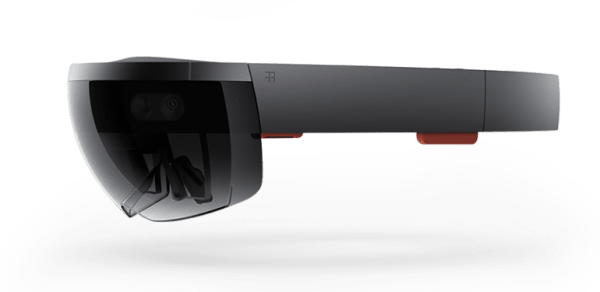
After just three months the team has experimented with the HoloLens in the factory – overlaying models to steelwork to see if it can be used for Quality Assurance.
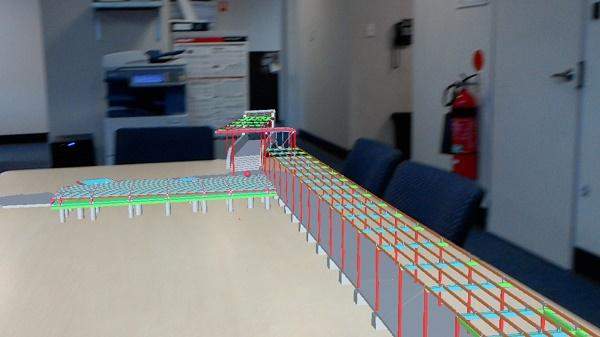

“GREEN HOTELS – taking the confusion out of sustainability in the hotel industry”
New magazine articles providing green building information and practices
Mark Thomson has recently been asked to contribute to two Australian magazines supporting the hotel and hospitality industry to assist in the education of the green rating tools. Accommodation projects have been a favourite over Mark’s 25year plus architectural career and the range of such projects includes refurbishment of city hotels and taverns, country motels, backpacker hostels, 3 star boutique city hotels, boarding houses, eco resort designs,4 star international city hotels, YMCA accommodation, student accommodation and luxury villas.
Up until 2005 Mark was a part owner of Brisbane’s first new 3star hotel project Explorers Inn at Turbot street Brisbane. This refurbishment project transformed a tired 1920’s building into a boutique city hotel, offering a new standard of affordable accommodation for Brisbane. Reusing a building capitalises on the embodied energy already invested in the building process, hence is a great green building strategy. Combined with reusing existing materials from the demolition of redundant building uses, the incorporation of sustainable, low VOC materials and an efficient building services system, the 58 room hotel operated successfully for over 10 years with occupancy rates in the high 80%.
It serves as a great example of a successful property redevelopment in its time, where good green building strategies provided new life and new accommodation for Brisbane.
17 May 2017
http://www.adbourne.com/hotel-eng-latest.html page 15
http://www.adbourne.com/exec-housekeeper-latest.html page 38
Mark Thomson has been an advocate for Sustainability for over a decade, and more recently, is a published co-author of The Environmental Brief: Pathways for Green Design.
The built environment is responsible for an estimated forty-five per cent of all greenhouse gas emissions. As the greatest opportunities for reducing these emissions occur during the briefing and design processes, the pathway to better design lies in preparing environmental briefs, and using these to drive building design and produce buildings of high environmental performance. This process-driven book looks at the theoretical issues involved in an environmental brief, and outlines methods by which architects can approach the writing of a brief that considers all aspects of the natural and the built environment, and relates these concepts to a number of case studies from around the world.
Richard Hyde is an Associate Professor and Director of the Centre for Sustainable Design at the University of Queensland, Australia. He is a practising architect and teaches interdisciplinary courses in the field of sustainable design.
Steve Watson is a Research Scholar at the Centre for Sustainable Design at the University of Queensland. He is an Environmental Consultant for TVS Partnership in Brisbane, Australia.
Wendy Cheshire is Director of Hamilton Hayes Henderson Architects, Southport, Queensland, Australia.
Mark Thomson is Director of TVS Partnership, Brisbane, and is an active board member of the Centre for Sustainable Design, The University of Queensland, Australia.
‘This thoughtful investigation into how to achieve integrated design has a good balance of strategic how-to guidance and detailed information.” – Technical & Practice
Last Friday, Mark joined a professional panel of industry experts to update University of Queensland Project Management Staff and students on Sustainable Construction.
Invited by Schiavello Systems NSW, Mark joined senior representatives of Cushman Wakefield, Gray Puksand Architects, Buildcorp and AECOM to inform the audience of approximately 60, the important role that Project Managers can provide in implementing Sustainable construction.Held in the new $180million ABS Building, the presentations highlighted recent case study projects and practical learnings in the delivery of green buildings. Marks presentation challenged the audience to go beyond the current greenstar standards to address Australia’s worsening waste disposal issues.He identified that the use of standardised furniture, modular systems, and recyclable materials would facilitate a culture of reuse and repurposing and reduce our environmental footprint burden.
Design for Disassembly and new construction methods are necessary to facilitate material effectiveness and resource efficiency.Our consumption patterns must change if we are to address the current climate and greenhouse gas emission issues, our planet’s health.All speakers were applauded and took questions, indicating that the information shared was well received by the emerging project management professionals of the future.
Queensland home owners must take the lead in demanding truly sustainable housing if we are to successfully deal with climate change and the current water crisis.
Mark Thomson, from the Queensland University of Technology’s School of Design, said the Queensland housing industry was largely paying lip service to sustainable housing and continued to build energy-inefficient, inflexible, and often toxic houses.
He said consumers must take an active role in driving the change to genuinely sustainable building practices by requesting them from designers, builders and manufacturers.
“Consumers understand the issues of energy and water conservation and climate change and they may be prepared to pay more but they must insist on sustainable products and designs and not assume they will automatically get them,” Mr Thomson said.
“Industry will generally not provide sustainable solutions unless consumers demand them, consequently it is up to consumers to broaden their knowledge of water conservation, energy efficiency and material toxicity details.”
He said to achieve a comfortable, environmentally in-tune house, a home should be viewed as a living organism and be built to respond and react to the climate.
“A house should open up to the breezes in summer or let in natural daylight in winter rather than rely on air-conditioners or lights to provide a livable environment,” he said.
“Unfortunately we stick to inflexible, outdated designs not suited to the changing rigours of the climate nor the energy crisis.
“Consumers must ask for sustainable timber and low toxic paints and glues when building. Enamel paints, for example, are toxic because they emit fumes from solvents so it is better to insist on low-emission alternatives.”
Mr Thomson said the move to higher density housing made sustainability more complex but just as vital.
He was involved in the design of Brisbane’s first sustainable apartment project, Viret in Clayfield, which used design features to radically cut the use of energy guzzling air conditioners and heaters that could be incorporated in all homes.
“At Viret, skylights and high level windows were used to let in natural light and allow hot air to escape. Light shafts let natural light into internal rooms such as kitchens and bathrooms, rooms which in standard apartments often need the lights on during the day.”
Mr Thomson said breezeways designed to assist cross ventilation in living rooms had proved a success. Roof water harvesting and grid-tied solar power at Viret had also contributed to sustainable outcomes.
“Most units have now sold at Viret, proving consumers are choosing increased sustainable living built solutions when they are offered.”
The Revitaliser” is a “living laboratory” established at the Brisbane Convention and Exhibition Centre for the 10th International Healthy Building Conference.
This full size demonstration display ,designed to increase workspace air quality, will test the impact plants will have on indoor environments. We know that vegetation is beneficial in reducing volatile organic compounds (VOC’S) however the additional oxygen levels they create in an office can improve workplace productivity and healthy living.
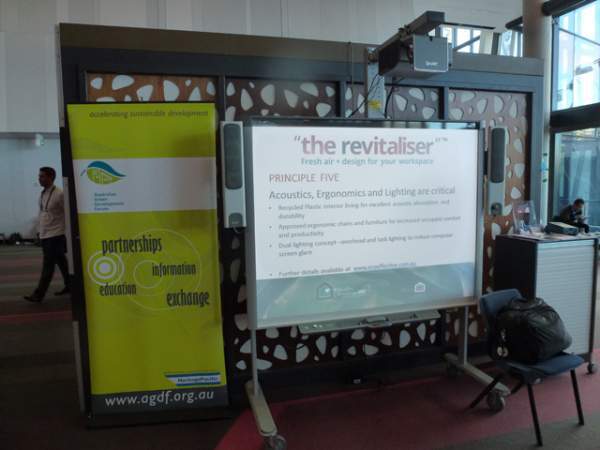
The Revitaliser Presentation
Schiavello Corporate Sustainability Principal, Mark Thomson conceived “the Revitaliser “ which includes flexible furniture solutions, a green wall and recycled and environmentally certified Echopanel wall linings from Cre8. Schiavello furniture has been positioned to demonstrate the latest overseas information on workplace productivity and office environments.
OCTIEF, is conducting detailed indoor air testing on “the Revitaliser” in front of 600 +overseas visitors and air quality experts at the conference. Real time data is being collected and conference delegates can witness the ongoing results via an Electroboard display panel
John Daly, Landscape Architect and Horticulturalist has selected the plants and soil to ensure optimum scientific testing results.The demonstration results will be reported by QUT and featured at future industry forums. This data continues the research which conclusively proves plants are beneficial for people in workplace and educational environments.
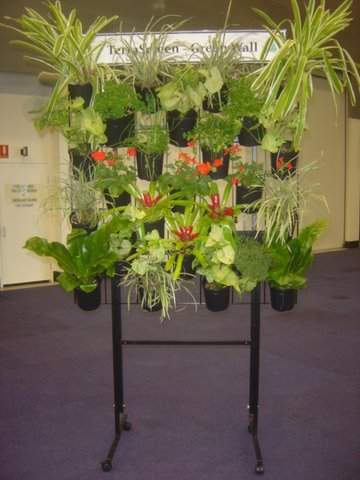
The Revitaliser Green Wall
Mark Thomson was Day One Convenor at the Healthy Buildings Conference where the relationship between energy efficiency and healthy buildings was challenged but now understood to be improving and requiring greater educational and scientific data .”The public expects green buildings to be healthy buildings and developing tools such as Greenstar Performance have the opportunity to ensure improved working and living environments.”
Mark is also President of the Australian Green Development forum which champions Positive Development. a reframed sustainable development approach for our built environment.